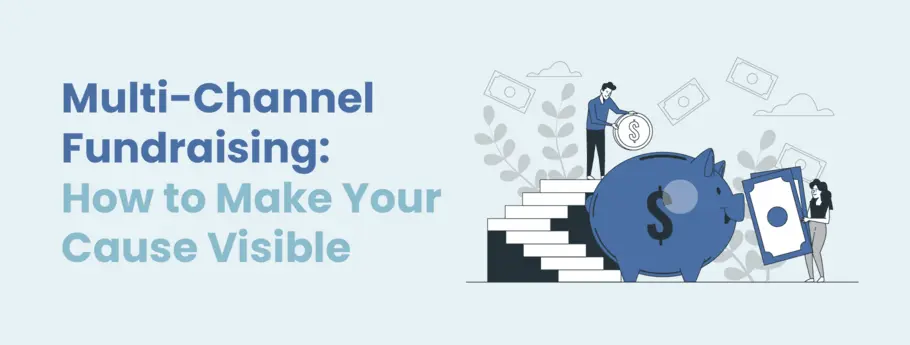Creative Nonprofit Fundraising Ideas: Boost Donations and Interaction
Wiki Article
The Role of Area Involvement in Nonprofit Fundraising: Building Lasting Relationships for Lasting Assistance
Community engagement is progressively identified as a critical component of effective not-for-profit fundraising. The methods and strategies used to involve areas vary commonly, increasing essential inquiries regarding efficiency and influence.Comprehending Community Involvement
Community engagement is an essential element of successful nonprofit fundraising efforts. It describes the methods and activities that organizations use to attach with their regional areas, fostering connections that are mutually useful. Understanding area interaction includes acknowledging its diverse nature, that includes participation, outreach, and cooperation. Nonprofits need to identify key stakeholders-- such as neighborhood participants, regional businesses, and various other companies-- to create effective involvement strategies.Reliable neighborhood interaction is based on active listening and responsiveness to the needs and rate of interests of the neighborhood. This procedure includes obtaining comments, understanding area characteristics, and making sure that the organization's objective straightens with local priorities. Engaging the area can take numerous forms, consisting of public meetings, volunteer chances, and partnership campaigns, each created to encourage involvement and financial investment in the company's goals.
Moreover, area interaction should be come close to as an ongoing dialogue rather than a single effort. By fostering a comprehensive atmosphere where area voices are listened to and valued, nonprofits can construct a solid foundation for future fundraising endeavors. Ultimately, a deep understanding of area interaction empowers organizations to produce authentic links that enhance their overall effectiveness and sustainability.
Benefits of Strong Relationships
Strong connections formed through community interaction yield many advantages for not-for-profit fundraising initiatives. Firstly, these partnerships foster trust and reliability, vital parts in encouraging contributors to add. When potential supporters see a not-for-profit actively entailed in their community, they are most likely to count on its goal and effect.
In addition, these partnerships facilitate effective communication. Nonprofits can leverage their links to share stories of effect, updates, and needs, making certain that supporters continue to be enlightened and involved. This open line of interaction not just enhances bonds but also urges referral promotion, increasing the not-for-profit's reach.
Last but not least, strong area ties can attract new partners and enrollers. Individuals and businesses are more inclined to straighten with companies that demonstrate significant community participation, giving added resources and support that can significantly improve fundraising capabilities. Thus, cultivating robust connections with area interaction is essential to a nonprofit's long-lasting fundraising success.
Approaches for Efficient Interaction
Just how can nonprofits properly engage their neighborhoods to improve fundraising initiatives? Normal updates, involving web content, and calls-to-action can galvanize neighborhood passion and engagement.Second, organizing area occasions, such as workshops, volunteer opportunities, or fundraising drives, promotes in person communication, permitting nonprofits to display their impact and initiatives. These events not just increase funds but additionally grow connections and permit community participants to involve directly with the cause.
Third, carrying out individualized communication approaches can enhance engagement. Customizing messages to specific donor sections based upon rate of interests and previous payments promotes a feeling of belonging and investment in the company's goal.
Finally, producing collaborations with local businesses and neighborhood leaders can amplify outreach efforts. Collective initiatives can enhance presence and reliability, demonstrating a cumulative dedication to the area's wellness. By integrating these techniques, nonprofits can develop long-term relationships that boost fundraising efforts and drive sustainable support.
Determining Interaction Success
While engaging the area is vital for successful not-for-profit fundraising, gauging the efficiency of these involvement efforts is similarly essential. Developing clear metrics enables companies to analyze exactly how well they are linking with their audience and accomplishing their fundraising goals. Key efficiency indications (KPIs) such as benefactor retention rates, read volunteer participation levels, and involvement on social networks platforms offer tangible information for analysis.
Frequently examining these metrics allows organizations to pivot their methods when essential, page making sure that community interaction stays straightened with their total mission. Additionally, sharing these outcomes with stakeholders cultivates openness and builds trust fund, motivating further area involvement. Inevitably, a robust dimension structure not just informs future fundraising campaigns but additionally enhances the relationship Get the facts between the nonprofit and its fans, preparing for sustainable success.
Study in Neighborhood Influence
Countless study illustrate the extensive impact that neighborhood engagement can have on not-for-profit fundraising success. One noteworthy example is the "Something to chew on" initiative, where a regional food financial institution partnered with services and institutions to host neighborhood dinners. These events not just raised funds but likewise promoted a sense of belonging among individuals, substantially enhancing contributor retention prices.One more engaging situation is the "Environment-friendly Spaces Job," which included neighborhood homeowners in the revitalization of city parks. This initiative not just gathered financial backing from neighborhood services but likewise cultivated a volunteer base that added to continuous upkeep and programs. The sense of ownership and pride amongst area members translated right into continual payments.
In the realm of arts, the "Art for All" campaign efficiently engaged neighborhood musicians and patrons to create collaborative art setups, leading to raised presence and donations for a local arts not-for-profit.
These examples highlight that when nonprofits focus on community participation, they can develop lasting connections that improve fundraising efforts, making certain sustainable assistance and cultivating a dynamic neighborhood society. Such instances show that area involvement is not simply a strategy but a crucial pillar of not-for-profit success.
Conclusion
In verdict, community engagement is essential to the success of not-for-profit fundraising efforts. Inevitably, a durable structure of area assistance not just magnifies fundraising potential however likewise grows a culture of partnership, necessary for accomplishing long-term organizational objectives and maintaining meaningful impact. fundraising consultant.Nonprofits must recognize crucial stakeholders-- such as area participants, neighborhood businesses, and other companies-- to produce efficient involvement approaches.

In verdict, neighborhood involvement is important to the success of nonprofit fundraising efforts.
Report this wiki page